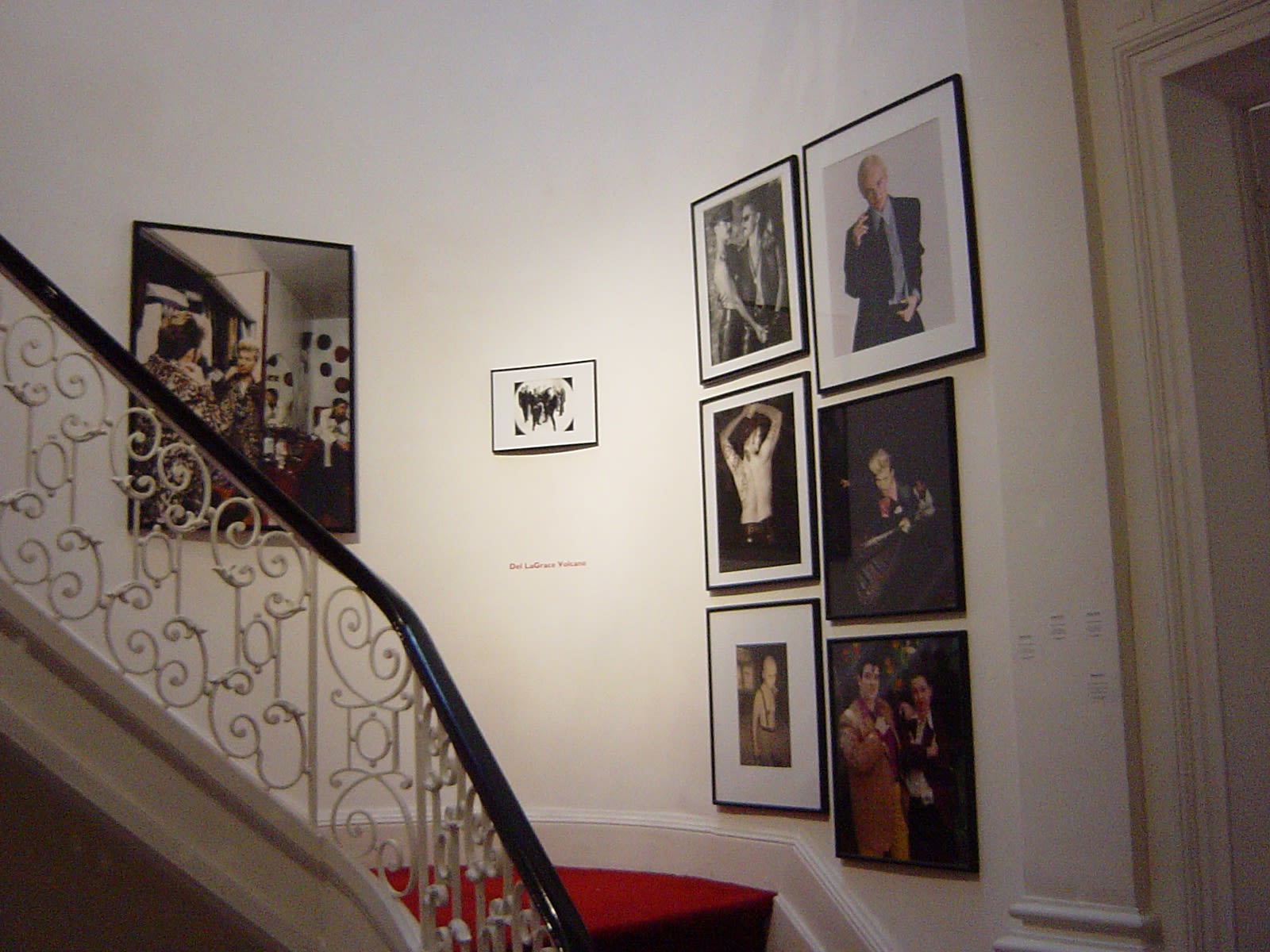
Female Turbulence
13 September - 18 October 2003
Aeroplastics @ Rue Blanche Str, Brussels
AEROPLASTICS presents 'Female Turbulence', an exhibition of the works of no fewer than thirty artists, videofilm-makers, visual artists and photographers that will be running at the gallery from 12 September to 18 October 2003. Ever true to his tradition of humour, derision and irony, Jerome Jacobs takes this opportunity to wonder about how the 'weaker sex' is represented in a certain type of contemporary art. Did I say 'weaker sex?' When going through turbulence, fasten your seat belt! With 'Femmes fatales' ,Antwerp's Fine Arts Museum recently gave some insights into the way in which the bourgeois and academic 19th century heaped praises upon – whilst reproving, for reasons of suitability – the pernicious charms of 'creatures' who were carefully sidelined from the decisions of the society of the time. The emergence of art as a mouthpiece for feminist demands and then, more recently, of creations that question the limits of how the masculine and feminine are portrayed has culminated in radical productions and attitudes in which the homosexual activist movement plays a leading role. However, while Love Parades and Gay Pride have made the drag queen a commonplace, the drag king phenomenon remains largely unrecognised. Photographer Del LaGrace Volcano is one of the most eminent representatives of this phenomenon. He is the author of The Drag King Book and recently took part in the Body Modifications Project of Macquairie University (Australia), aimed at bringing scientists and artists together to explore the matter of sexual identity. 'Dr Del', as he likes to be called, defines himself as 'a gender terrorist' who contests the social division made between masculine and feminine solely on the basis of biological criteria. The Guerrilla Girls, for their part, have taken it upon themselves to study the effects of such a partition on the art world. These activists, each of whom has taken the name of a famous woman artist, have been denouncing since the 1980s the systematic under-representation of women in the art world. 'Do women have to be naked to get into the Met. Museum?' 'Less than 5% of the artists in the Modern Art sections are women, but 85% of the nudes are females' and 'Women in America earn only 2/3 of what men do. Women artists earn only 1/3 of what men do!' are some of the slogans on their posters. When it comes to filling the pages of gossip magazines, on the other hand, women continue to have the leading role, to the detriment of the most elementary respect for privacy. Still, where does reality hide and where is manipulation? That is the question that Alison Jackson's 'Mental Images' put to us. Jackson's work was recently on exhibit at Charleroi's Photography Museum. Her photographs of paparazzi showing Diana, Charles and the latter's mistress, Camilla, deep in discussion or the same trio in the company of the Queen Mum challenge many enlightened views of relations among the royals. However, just like the shot revealing David Beckham's liking for strings, these pictures are pure creations, made not just through editing, but with the help of look-alikes and sophisticated staging as well. In contrast, real stars pose for Greg Gorman and Anton Corbijn, but the latter manages better than anyone else to get them to shed the masks of stardom. The fashion photographer Marcel van der Vlugt, on the other hand, takes the notion of models to extremes. For his pictures, he covers his models' faces with various foods in order to turn them literally into products for consumption (the 'I Like' series). Other fashion photographers, such as Izima Kaoru and Cornelie Tollens, also hijack a highly codified genre. In another corner, Myriam Hornard questions the female stereotypes of another world that is governed by strict rules, that of the photo novella. Pamela Peeters, who defines herself as 'a city explorer of urban ecology, community and business news', explores yet another world. This native of Antwerp is now based in New York, where she produces the broadcast Our-Planet.org: 'I bring you interviews with people who are a source of inspiration for the current and the next generations to come.' As is often the case at Aeroplastics, the exhibition confronts the work of known artists (Cindy Sherman, Nobuyoshi Araki, Andres Serrano, Shirin Neshat, Laurie Simmons, John Isaacs, and Annie Sprinkle, with her famous 'Bosom Ballet' – a choreography of breasts for her black-gloved hands) with that of younger creators. The latter include, for example, the Mexican video artist Yoshua Okon with his 'Cockfight', which is a particularly explicit (thanks to subtitling) verbal joust between two teenage girls. With 'Get Your Gun Up', the New York artist Alex McQuilkin (whose video self-portrait 'Fucked' was exhibited previously at Aeroplastics) places this type of conflict in the spaghetti western tradition: two bikini-clad girls filmed at waist height as they mime a duel to music along the lines of 'Once Upon a Time in the West'. In her video, the Swiss artist Elodie Pong reveals her magnificent tattoos, in particular a butterfly whose beating wings will generate considerable turbulence. This stripping of herself appears to be the opposite of the installation 'Any Deal Now/Any Reality Now' that she put on recently at the Swiss Cultural Centre in Paris, i.e., a variation on the theme of self-confession so dear to Sylvie Blocher in which the visitors were invited to reveal their most intimate secrets. Pierre-Yves Desaive
group show with works by
Nobuyoshi Araki, Michal Chelbin, Anton Corbijn, De Sirenen, Greg Gorman, Guerrilla Girls, Myriam Hornard, John Isaacs, Alison Jackson, Anya Janssen, Izima Kaoru, Sarah, Del LaGrace Volcano, Lucas, Alex McQuilkin, Shirin Neshat, David Nicholson, Yoshua Okon, Pamela Peeters, Elodie Pong, Pipilotti Rist, Thomas Ruff, Chéri Samba, Andres Serrano, Cindy Sherman, Laurie Simmons, Annie Sprinkle, Cornelie Tollens, Joel-Peter Witkin, Marcel Van Der Vlugt.






